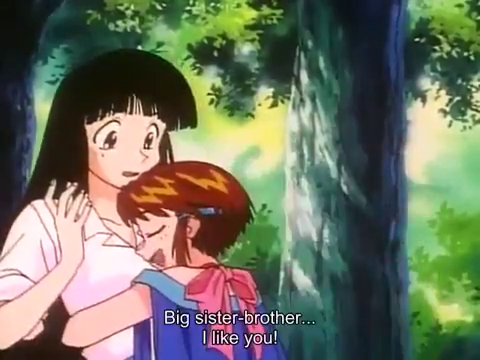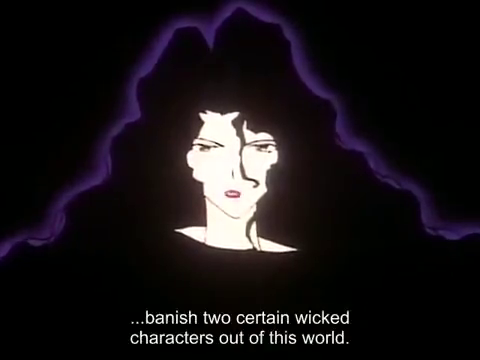Maze☆Bakunetsu Jikuu
27 March, 2023
Today, many of the most popular isekai anime and even manga are adapted from popular light novels, but this was not always the case. Isekai anime of the 1980s and 1990s were mostly anime originals or adapted from manga, although isekai light novels were being published therein at the time; 1997’s Maze☆Bakunetsu Jikuu is of historical interest for being likely the first in what would become a long and illustrious trend, and eventually a tidal wave.
Unfortunately, as of this writing, none of the light novels have been translated into English, so I can not comment on Maze as an adaptation per se. Its story feels complete, but can not be; episode 25 was either a fine original ending or a good stopping point, for the novels, 13 in all, continued after the anime finished airing. What I can talk about is the anime, a fun and entertaining tale that deserves far better than its current obscurity.
To be sure, many of the English-language isekai books to become popular in Japan were released in a short, illustrated, and serial form that contemporary audiences would recognize as a light novel, although the term did not exist at the time. The Maze anime actually opens with a reference to one such work, with the title character, Ikaruga Mei, arriving in the Forest of Panon along her whole house, which landed, much as the house in The Wizard of Oz did, on some of the baddies. In this story, they were chasing the princess Mill, who immediately falls for her savior.


The pacifist female Mei transforms, initially during a mech battle, into a hyper-aggressive murderhobo of a young man. The two personalities frequently quarrel - it’s as much a bodyshare story as a genderswap one, and their opposite attitudes towards relationships and violence alike make for a great deal of internal tension, especially in the first few episodes. Ultimately, the female Mei finds she needs her male counterpart, and vice versa – both to operate their mech and to protect the people they care about.


Mei, whether in male or female form (or Maze, to pluralize them), develops quite the bisexual harem over the course of the story, although Mill is the only one who is drawn to Maze regardless of gender. From Solude, an openly lesbian mercenary whose groping attempts are foiled by an impromptu sex change in a gag reminiscent of El-Hazard’s Arielle in her first encounter with the crossdressing Makoto, to Gold, a flirtatious knight who is actually his own country’s king in disguise. Male maze also does not lack for suitors, if not quite the harem of every woman he can find which he dreams of; apart from Mill, the otokonoko Ran Chiki (who is also a bitter rival of the female maze) notably seeks his affections and thereby completes the LGBT set.
In a genre typified by megalomaniacs and demon kings, the Jaina Holy Faith makes for a fascinating and unique antagonist. At first, admittedly, it appears very much in the former category, trying to unify the other world – albeit through political factionalism, not force, and thereby providing a lot of intrigue before the inevitable mech battles, with different adventures and monarchs in different countries. A regent abusing her powers and an attempted forced marriage here, a hidden king and corrupt minister there.
Like many an enemy cult in fantasy, there is an actual god at the head of the Jaina faith – or perhaps I should say the actual god, as Maze’s setting includes no others, making Jaina the in-universe true religion. The Creator fears Maze’s powers, and her motive is less to rule the world then to eliminate Maze personally – there’s kind of a Zeus vs. Cronus thing going on, with Maze in the latter’s role, and the very name of Ikaruga, and a number of strange family traditions, being associated with these powers.

Like many an isekai of its era, and far too few today, Maze does not leave the Earth out of its story, nor does it spend too long in one location. Even time is crossed in this adventure, with a couple episodes set in a past that, much like its contemporary Escaflowne comes with advanced technology that makes it easy to mistake for the future. Earth first appears in visions that take over what begins as a typical hot springs episode, with our amnesiac heroine getting a glimpse of what she left behind, but could barely remember – and we see it again in a climactic story arc, complete with a siscon of a brother who shares a face, but not a personality, with the male maze, and a mech buried under her old school.


Rarely for the era, Mei is actually able to stay in the other world at the end – but then again, the light novels hadn’t finished yet.